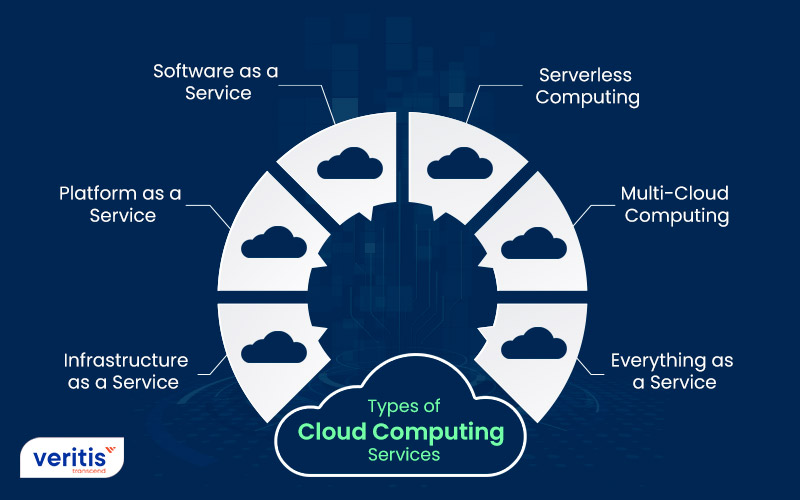Opening Success with LinkDaddy Cloud Services: Optimizing Universal Cloud Service Impact
Opening Success with LinkDaddy Cloud Services: Optimizing Universal Cloud Service Impact
Blog Article
Simplify Your Facilities With Cloud Solutions
As businesses navigate the ever-evolving landscape of innovation and information management, the role of cloud services in streamlining framework has ended up being increasingly popular. The attraction of streamlined processes, enhanced performance, and boosted resource allotment via cloud services is obvious. Nevertheless, the journey towards a much more affordable and active IT infrastructure includes more than simply migrating to the cloud. It calls for a strategic technique and a deep understanding of the nuances of cloud fostering. How can organizations successfully browse this transition and truly unlock the capacity of cloud services for simplifying their facilities?
Benefits of Cloud Services
Cloud solutions use a structured method to handling IT facilities, offering organizations with cost-efficiency, versatility, and scalability. Among the crucial benefits of cloud services is the scalability they offer. Businesses can conveniently scale their sources up or down based upon demand, guaranteeing they only spend for what they make use of. This flexibility is specifically advantageous for organizations with changing requirements or those experiencing development.
In addition, cloud services remove the need for companies to purchase expensive equipment and software program. This cost-efficiency is a significant advantage, especially for little to medium-sized enterprises seeking to minimize in advance prices. By making use of cloud services, organizations can access top quality IT sources without the large cost connected with typical facilities setups.
Additionally, cloud solutions give businesses with the adaptability to access their data and applications from anywhere with a web link. This level of accessibility boosts partnership among teams, enables remote job, and increases general efficiency. The flexibility provided by cloud services equips organizations to adapt swiftly to changing market conditions and client needs.
Price Financial Savings and Scalability
In enhancement to the operational benefits highlighted earlier, the integration of cloud solutions into a company's infrastructure generates considerable cost financial savings and boosted scalability. Cloud services supply a pay-as-you-go design, permitting businesses to range sources up or down based on present requirements, therefore staying clear of the costs connected with keeping excess capacity. This adaptability allows business to adjust swiftly to fluctuating demands without incurring unnecessary expenses.
Moreover, cloud solutions get rid of the need for ahead of time investments in equipment and software program, decreasing capital investment. Operating budget are likewise minimized as companies no longer need to handle and maintain physical servers, leading to reduced energy intake and IT staffing costs. Furthermore, cloud services offer automated updates and maintenance, making certain that the framework remains updated and secure without calling for hands-on treatments.
Enhanced Security Steps
When integrating cloud services right into a company's infrastructure to safeguard sensitive data and guarantee compliance with market laws,Executing rigid safety and security procedures is paramount. Cloud provider use boosted safety and security features such as information encryption, firewall defense, and multi-factor verification to mitigate cybersecurity dangers. Security aids safeguard data both at remainder and en route, making certain that just accredited customers can access delicate details. Firewall softwares serve as a barrier in between interior networks and outside hazards, monitoring and regulating outbound and incoming network web traffic. Multi-factor authentication adds an extra layer of safety and security by needing individuals to give numerous forms of verification before accessing the cloud solutions.
Additionally, routine security audits and conformity evaluations assist guarantee and determine susceptabilities adherence to sector requirements. Business can additionally take advantage of features like automated protection updates and real-time threat tracking offered my review here by cloud provider. By focusing on safety procedures and remaining aggressive in dealing with prospective threats, businesses can with confidence leverage cloud solutions while securing their beneficial data from unauthorized accessibility or breaches.
Transitioning to Cloud Infrastructure
To effectively incorporate cloud services right into a firm's framework, an organized technique that addresses the change towards cloud-based solutions is crucial. Transitioning to cloud infrastructure involves cautious planning and execution to make certain a smooth movement procedure - universal cloud Service.
As soon as the evaluation is complete, a movement strategy must be developed. This technique should lay out the timeline, resources, and obligations for relocating each element to the cloud. It is necessary to communicate this plan plainly to all stakeholders to make sure alignment and minimize disruptions during the shift.
Throughout the movement procedure, surveillance and screening are essential to recognize and resolve any kind of issues without delay. Regular checkpoints should be developed to track progress and make necessary adjustments. In addition, training for workers on using cloud services ought to be given to guarantee a successful shift and optimize the benefits of the brand-new facilities.
Best Practices for Cloud Fostering
Successful adoption of cloud solutions rests on the critical positioning of service goals with technological capacities and organizational preparedness. To make sure a smooth change to the cloud, companies need to begin by conducting a thorough analysis of their present facilities and recognizing which workloads are best fit for cloud migration. It is important to entail vital stakeholders from various divisions in the decision-making process to obtain buy-in and attend to any kind of issues beforehand.
An additional finest technique for cloud fostering is to prioritize security and compliance. Organizations has to carefully assess the safety and security measures supplied by cloud solution providers and make sure that their information is secured according to sector standards and regulatory needs. Implementing durable data encryption, access controls, and you could try this out routine protection audits can help reduce dangers connected with cloud adoption.

Final Thought

As organizations navigate the ever-evolving landscape of innovation and data monitoring, the role of cloud services in simplifying framework has actually become significantly noticeable - linkdaddy cloud services press release. Just how can organizations effectively browse this change and truly unlock the capacity of cloud solutions for simplifying their facilities?
Cloud solutions provide a streamlined method to handling IT framework, offering companies with cost-efficiency, flexibility, and scalability. By making use of cloud solutions, services can access top quality IT sources without the substantial rate tag linked with standard facilities arrangements.
To guarantee a smooth change to the cloud, organizations ought to start by carrying out an extensive analysis of their present framework and recognizing which workloads are best suited for cloud migration.
Report this page